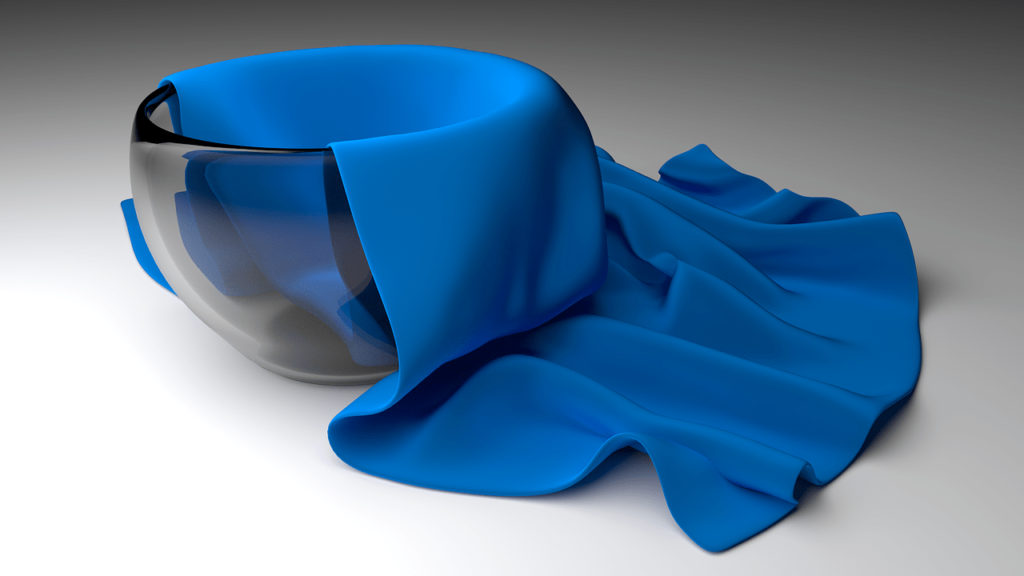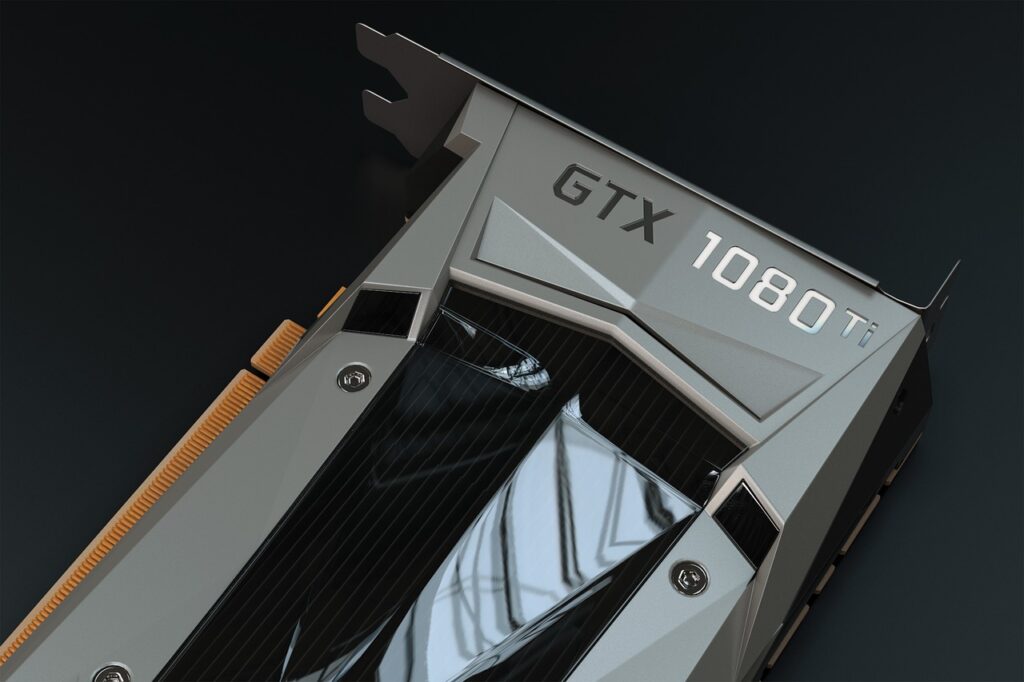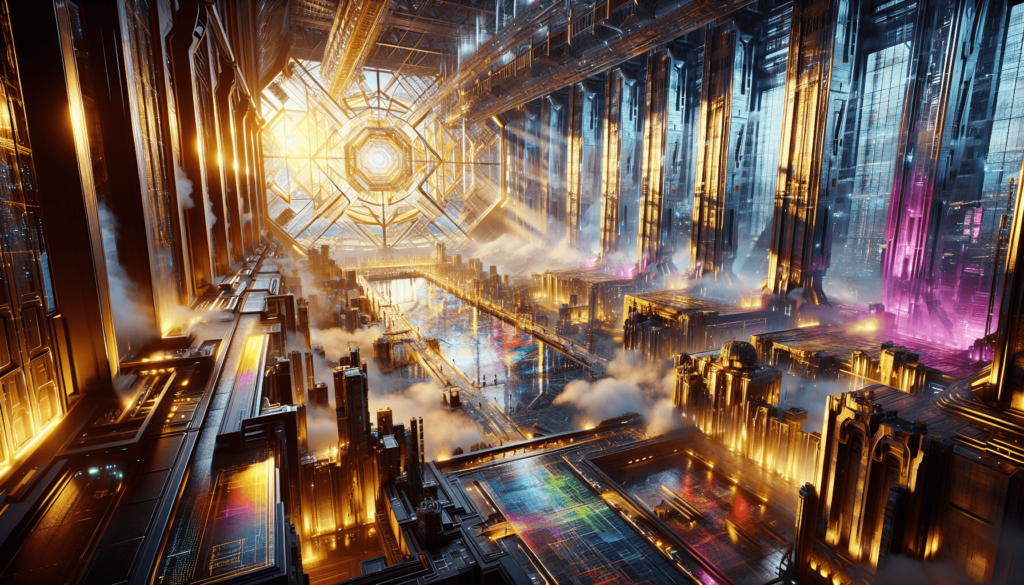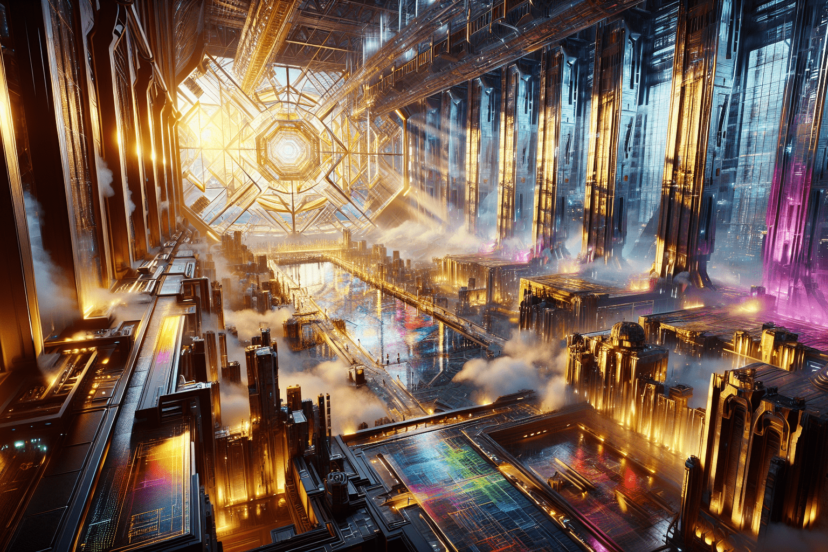What Is Ray Tracing In Video Games?
Have you ever wondered how video game graphics look so realistic? Well, the answer lies in a revolutionary technology called ray tracing. With ray tracing, developers are able to simulate the behavior of light in real time, creating hyper-realistic graphics that immerse players into a virtual world like never before. In this article, we will explore the fascinating world of ray tracing in video games, understanding how it works and why it has become a game-changer in the industry. So, get ready to be amazed as we unravel the secrets behind this cutting-edge technology!

Definition of Ray Tracing
Basic concept of ray tracing
Ray tracing is a rendering technique used in computer graphics to create realistic images by simulating the behavior of light in a virtual environment. It involves tracing the path of light rays as they interact with objects in a scene, capturing how they are reflected, refracted, and absorbed. By accurately modeling the behavior of light, ray tracing can create visually stunning and lifelike graphics.
How ray tracing works in video games
In video games, ray tracing is used to enhance the visual quality and realism of the virtual worlds players interact with. It works by simulating the path of individual light rays as they intersect with objects and surfaces in the game environment. This allows for realistic lighting effects, accurate reflections, and realistic shadows. The computed values for each pixel in the final image are based on the path of the rays and the properties of the materials and lights in the scene.
History of Ray Tracing in Video Games
Early attempts at ray tracing in games
Ray tracing in games has a long history, with early attempts dating back to the 1980s. However, the computational requirements at the time limited its widespread use in real-time applications. The first notable game to utilize ray tracing was “Wolfenstein 3D” in 1992. It used ray casting, a simpler form of ray tracing, to calculate line of sight visibility for enemies. Despite its limitations, this early implementation laid the foundation for future advancements in ray tracing technology.
Advancements in hardware and software for ray tracing
In recent years, advancements in hardware and software have made real-time ray tracing more accessible for video games. The introduction of dedicated hardware, such as Nvidia’s RTX series graphics cards, has significantly improved the performance of ray tracing. Additionally, the development of ray tracing APIs, such as Microsoft’s DirectX Raytracing (DXR), has made it easier for game developers to implement ray tracing into their games. These advancements have paved the way for a new era of visually stunning and realistic games.

Benefits of Ray Tracing in Video Games
Realistic and immersive visuals
One of the primary benefits of ray tracing in video games is the creation of realistic and immersive visuals. By accurately simulating how light interacts with the environment, ray tracing can produce lifelike lighting effects and materials. This level of realism enhances the player’s immersion and can make game worlds feel more believable and tangible.
Enhanced lighting and reflections
Ray tracing enables highly realistic lighting and reflections in video games. With accurate calculations for each light ray, dynamic lighting effects, such as soft shadows, accurate reflections, and global illumination, can be achieved. This level of detail and fidelity elevates the overall visual quality of games, making virtual environments feel more natural and vibrant.
Accurate shadows and global illumination
One of the biggest challenges in traditional rendering techniques is accurately rendering shadows and global illumination. With ray tracing, this challenge is overcome as light rays are traced in real-time, allowing for precise calculations of shadow casting and light bouncing. This results in shadows that accurately correspond to the position and shape of objects, as well as realistic global illumination that spreads light throughout the scene, creating a more immersive and visually pleasing experience.
Challenges of Implementing Ray Tracing in Video Games
Hardware requirements
One of the main challenges of implementing ray tracing in video games is the hardware requirements. Real-time ray tracing requires significant computational power, especially for complex scenes with a large number of light sources and detailed geometry. High-performance graphics cards, such as those with dedicated ray tracing hardware, are necessary to achieve smooth and playable framerates. This can pose a challenge for game developers and players who may need to upgrade their hardware to take full advantage of ray tracing capabilities.
Performance impact
Another challenge is the performance impact of ray tracing. While hardware advancements have mitigated some of the performance issues, ray tracing still requires a substantial amount of computing power. Implementing ray tracing can result in lower framerates, especially on older or less powerful hardware. Balancing the visual fidelity provided by ray tracing with the need for smooth and responsive gameplay is a crucial consideration for game developers.
Development time
Implementing ray tracing in video games can also require a significant investment of development time. Properly integrating ray tracing into a game engine and optimizing it for real-time rendering can be a complex and time-consuming process. This may result in longer development cycles and higher costs. However, as the technology becomes more mainstream and integrated into game engines, the development process is likely to become more streamlined and efficient.

Comparison to Traditional Rendering Techniques
Rasterization vs. ray tracing
Traditionally, video games have utilized rasterization as the primary rendering technique. Rasterization involves projecting 3D polygons onto a 2D screen and simulating lighting effects through various shading techniques. While rasterization is efficient and well-suited for real-time rendering, it has limitations in achieving photorealistic visuals. Ray tracing, on the other hand, provides more accurate and realistic lighting effects and reflections. By simulating the path of light rays, ray tracing can achieve a level of visual fidelity that is difficult to replicate with rasterization alone.
Pros and cons of each approach
Rasterization has advantages in terms of performance and compatibility, as it is well-optimized for real-time rendering. It allows for fast and efficient rendering of complex scenes and can support high framerates even on less powerful hardware. However, rasterization has limitations when it comes to realistic lighting and reflections, often relying on precomputed or approximated techniques. Ray tracing, while computationally intensive, offers unparalleled realism and visual fidelity. It enables accurate calculations for complex lighting effects and provides a more physically accurate representation of the virtual world. The downside of ray tracing is the higher hardware requirements and potential performance impact, which may limit its widespread adoption in certain contexts.
Ray Tracing Techniques in Video Games
Path tracing
Path tracing is a rendering technique that simulates the path of light rays by tracing their paths from the camera into the virtual scene and bouncing off surfaces until they reach a light source. It provides highly realistic lighting and reflections by taking into account multiple bounces of light. Path tracing can be computationally expensive but offers unparalleled realism and is commonly used in offline rendering and pre-rendered cinematic sequences.
Screen space reflections
Screen space reflections (SSR) is a ray tracing technique that simulates reflections on objects based on what is visible on the screen. It works by capturing the scene from the camera’s perspective and tracing rays for each pixel to determine the reflection from nearby objects. SSR is a popular technique in real-time rendering as it offers a good balance between visual quality and performance.
Ambient occlusion
Ambient occlusion is a shading technique used to simulate the soft shadows and contact shadows that occur when objects are close to one another. In ray tracing, ambient occlusion is achieved by tracing rays from the surface of an object to sample the surrounding environment, determining how much ambient light is occluded by nearby geometry. By accurately accounting for ambient occlusion, ray tracing can enhance the realism and depth of scenes.
Global illumination
Global illumination refers to the realistic rendering of how light interacts with objects in a scene. It models the indirect lighting that occurs when light bounces off surfaces and illuminates other parts of the environment. In ray tracing, global illumination is achieved by tracing multiple rays for each light source and accounting for their interactions with reflective and refractive materials. This technique allows for accurate representation of light bouncing and scattering within a scene, resulting in more believable and visually appealing visuals.

Hardware and Software Support for Ray Tracing
Nvidia’s RTX technology
Nvidia’s RTX technology has played a significant role in advancing the adoption of ray tracing in video games. RTX graphics cards feature dedicated hardware called RT cores, specifically designed to accelerate real-time ray tracing computations. These specialized cores enable faster ray tracing performance, reducing the hardware requirements and enabling more games to utilize ray tracing technology.
Microsoft’s DirectX Raytracing (DXR)
Microsoft’s DirectX Raytracing (DXR) is an API that allows game developers to easily implement ray tracing into their games. DXR provides a set of functions and frameworks that simplify the integration of ray tracing into game engines. By standardizing the development process, DXR has made it easier for game developers to embrace ray tracing and has contributed to its growing popularity in the gaming industry.
Other hardware and software solutions
In addition to Nvidia’s RTX technology and Microsoft’s DXR, there are other hardware and software solutions available for supporting ray tracing in video games. AMD, for example, has introduced their own ray tracing technology with the release of their RDNA 2 architecture. Other game engines, such as Unity and Unreal Engine, have also integrated ray tracing features into their development pipelines, making it accessible to a wider range of game developers.
Notable Games Utilizing Ray Tracing
Cyberpunk 2077
Cyberpunk 2077, developed by CD Projekt Red, is an open-world action RPG that made extensive use of ray tracing to create a visually stunning and immersive experience. The game utilizes ray tracing for global illumination, accurate reflections, and realistic shadows, elevating the visual quality and adding a level of realism to the futuristic world of Night City.
Control
Control, developed by Remedy Entertainment, is a supernatural third-person shooter that showcases the potential of ray tracing in creating dynamic and immersive visuals. The game utilizes ray tracing for enhanced reflections, realistic lighting, and detailed shadows, allowing players to experience a visually captivating and atmospheric environment.
Minecraft
Minecraft, the popular sandbox game developed by Mojang Studios, introduced ray tracing support with the release of its “RTX Beta” version. Minecraft’s ray tracing implementation brings realistic lighting and reflections to the iconic blocky world, offering a visually stunning and immersive experience for players who want to explore and create in a whole new way.
Future of Ray Tracing in Video Games
Advancements in hardware capabilities
As hardware technology continues to advance, we can expect significant improvements in the capabilities and performance of ray tracing. Graphics cards with dedicated ray tracing hardware will become more widespread and affordable, making ray tracing a standard feature in gaming devices. This will unlock even greater possibilities for visually stunning and realistic games.
Increased adoption in game development
With the introduction of hardware advancements and standardized APIs, the adoption of ray tracing in game development is expected to increase. As more game engines integrate ray tracing features and more developers become familiar with the technology, we can anticipate a broader range of games utilizing ray tracing. This will result in a more immersive and visually satisfying gaming experience for players.
Potential applications in virtual reality
Ray tracing technology has the potential to revolutionize the virtual reality (VR) gaming industry. VR relies heavily on immersion and creating realistic environments, making ray tracing a natural fit. By accurately simulating light interactions, ray tracing can enhance the visual quality and realism of VR experiences, providing players with more immersive and believable virtual worlds.
Conclusion
Impact of ray tracing on video game visuals
Ray tracing has had a profound impact on video game visuals, significantly enhancing the level of realism and immersion. By simulating the behavior of light in a virtual environment, ray tracing can create visually stunning lighting effects, accurate reflections, and realistic shadows. This level of detail and fidelity elevates the overall visual quality of games, making them more immersive and visually appealing.
Continued evolution of ray tracing technology
Ray tracing technology is still in its early stages and will continue to evolve and improve. Advancements in hardware capabilities, increased adoption in game development, and potential applications in virtual reality will drive the continued evolution of ray tracing. As the technology becomes more mainstream and accessible, we can expect even more visually stunning and realistic games in the future.




